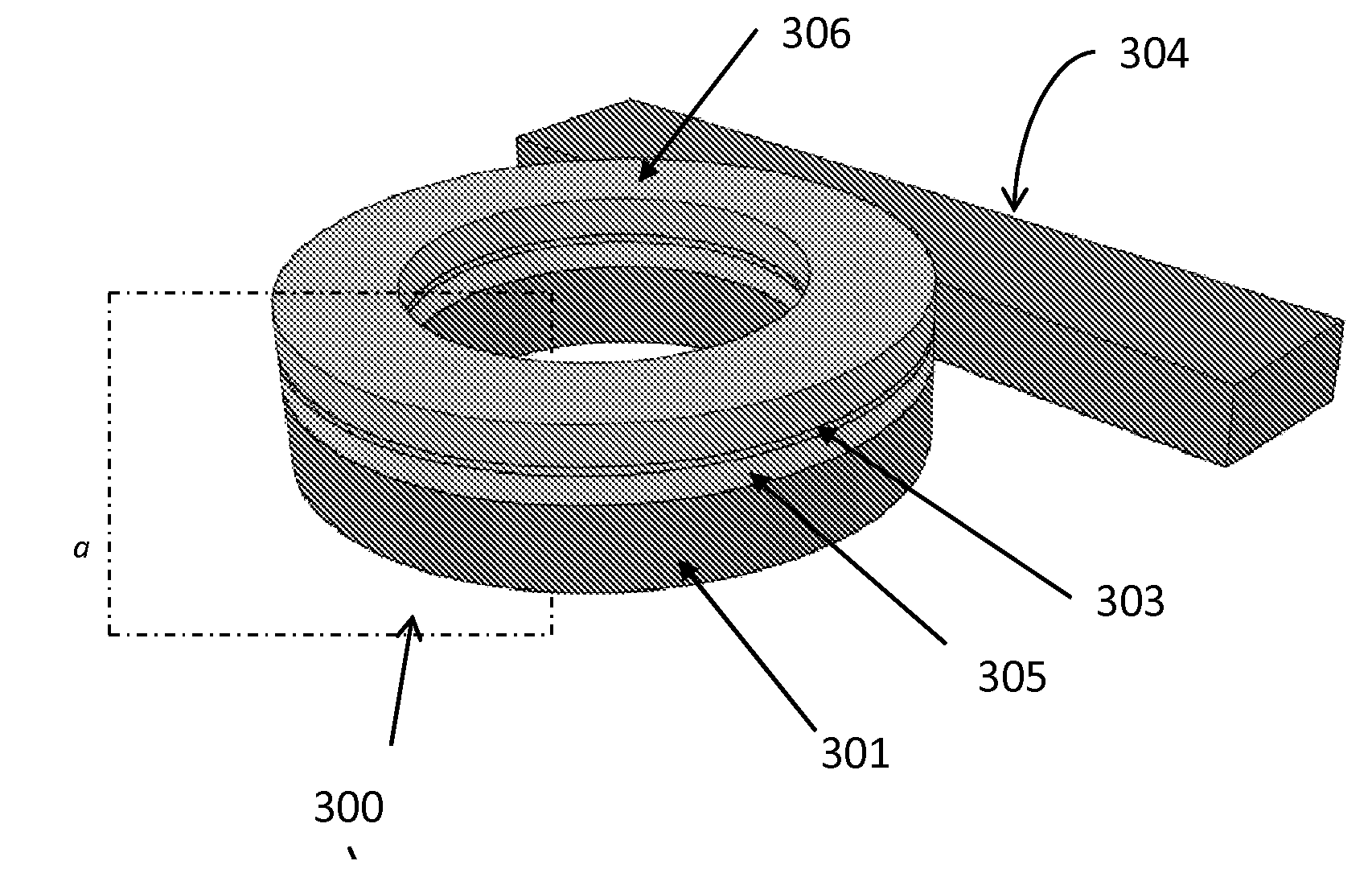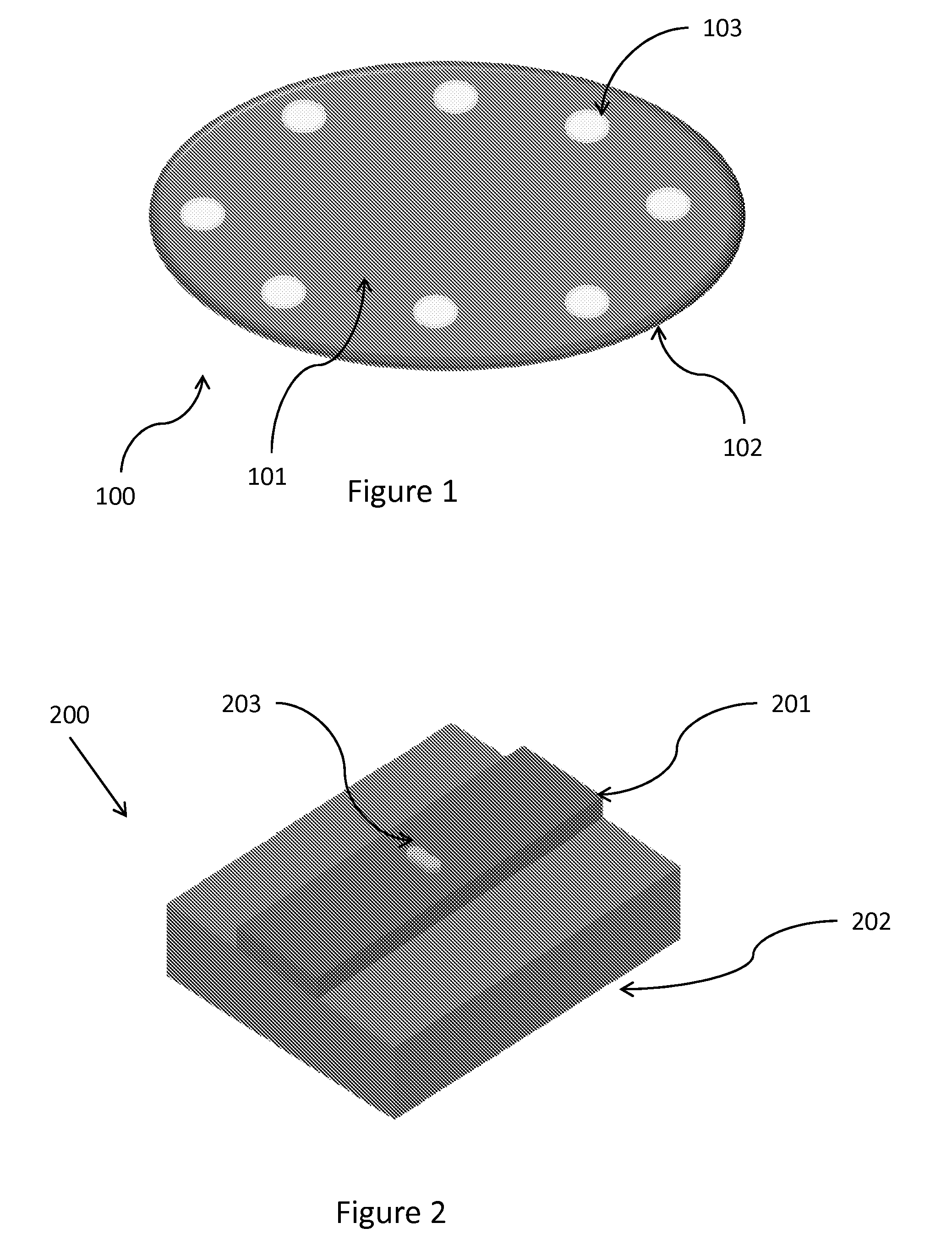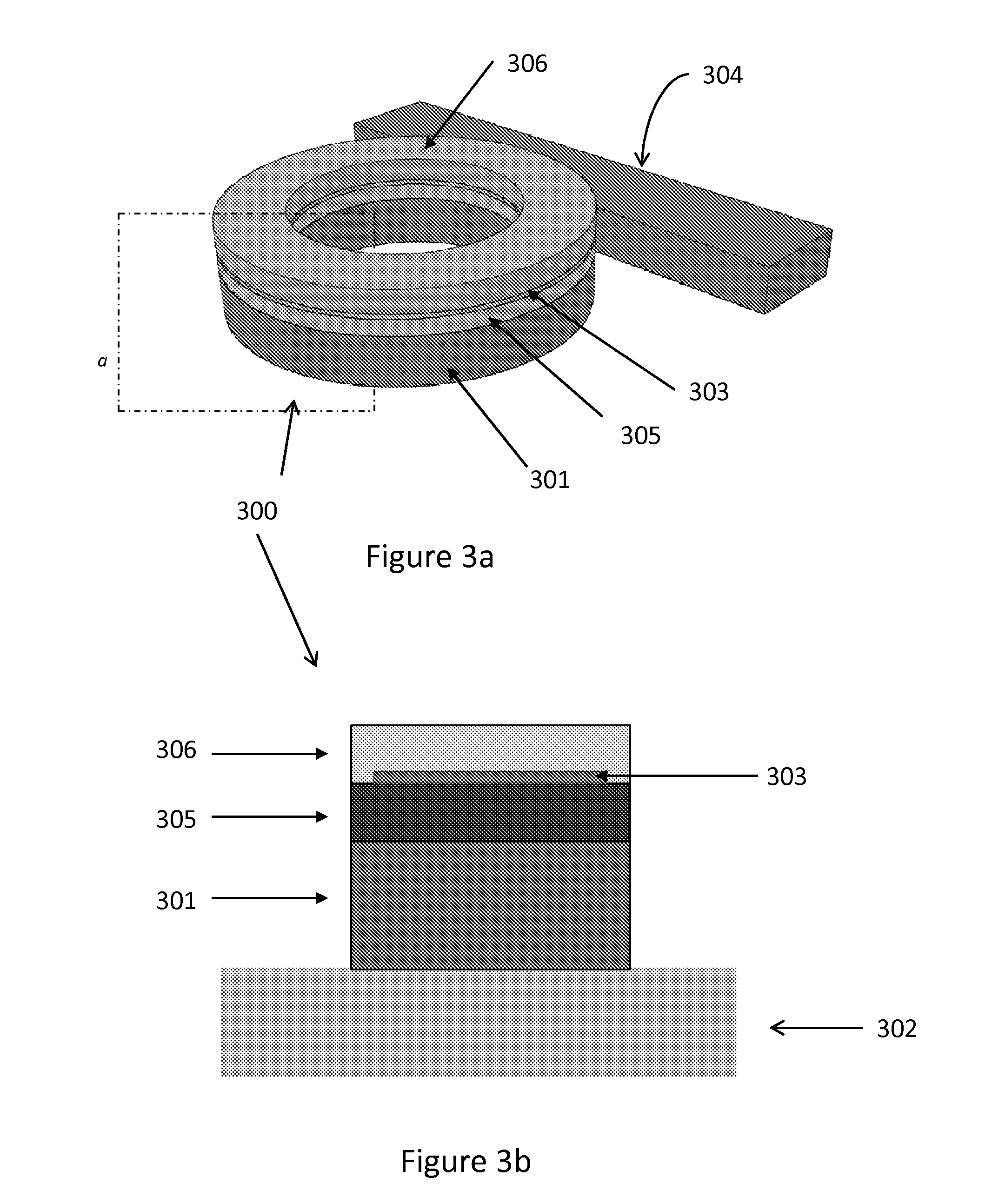Plasmonic and photonic resonator structures and methods for large electromagnetic field enhancements
a plasmonic and plasmonic resonator technology, applied in the direction of instruments, optical waveguide light guides, optical elements, etc., can solve the problems of difficult control of the excitation efficiency of individual nanoparticles, small optical power can be coupled to these structures, and the conventional spr sensor system is usually large and bulky. achieve the effect of reducing the transmission of ligh
- Summary
- Abstract
- Description
- Claims
- Application Information
AI Technical Summary
Benefits of technology
Problems solved by technology
Method used
Image
Examples
example 1
[0083]A biosensor device which used hybrid whispering gallery plasmonic-photonic microring resonator was constructed and theoretically investigated, as shown in FIGS. 3(a) and 3(b), for label-free sensing of biomolecules. The sensor consisted of a silicon nitride (Si3N4) dielectric traveling-wave ring resonator vertically coupled to a thin layer of metallic strip ring resonator on top covered by a porous alumina (p-Al2O3) which served as the sensor interaction medium. In this hybrid resonator, the surface plasmon mode was excited on top of the metallic layer in the porous cladding where the target molecules could efficiently interact with the enhanced electromagnetic field associated with the surface plasmon wave. One of the unique features of this hybrid resonator sensor was the large sensitivity of the surface plasmon waves and the relatively high quality factor Q because of the photonic ring resonator. Sensing of target molecules is performed by transcribing their adsorption to t...
example 2
[0115]The schematic of the hybrid plasmonic-photonic structure consisting of a silicon nitride (Si3N4) ridge waveguide integrated with a gold nanorod on top is shown in FIG. 11. The substrate is silicon dioxide (SiO2). The photonic waveguide with a cross section of (wxh) supports a transverse electric (TE-like) mode over a spectral range that covers the resonance of the plasmonic resonator. The ridge waveguide carries the light and the evanescent tail of the guided mode excites the plasmonic resonatormode. The plasmonic resonatoris assumed to be a gold nanorod with dimensions of (d1×d2×t), where t is the thickness of the gold nanorod. The radius of curvature of the nanorods is assumed to be half of its width, i.e., (d2 / 2). Although we have considered a gold nanorod as the plasmonic resonator, other types of nanoparticles can also be used in the same hybrid structure, and the design, analysis, and implementation will follow the same procedure. Silicon nitride is considered as the mat...
example 3
[0120]The resonance wavelength of the hybrid waveguide plasmonic resonator can be changed by varying the size of the nanoparticle on the surface of a photonic waveguide. Two devices were prepared using standard lithographic techniques. A nanoparticle was placed on the surface of each waveguide, and a broadband light source covering wavelength range of 500 nm to 1700 nm was made to pass through the waveguide with a power spectral density of −54 dBm / nm. The detection was done with only 1 second integration time. These results are shown in Table 2.
TABLE 2WaveguideNanoparticlewidth (nm)dimension (nm)λ0 (nm)Device 1864142 × 56 × 27839Device 2855120 × 56 × 27734
PUM
 Login to View More
Login to View More Abstract
Description
Claims
Application Information
 Login to View More
Login to View More - R&D
- Intellectual Property
- Life Sciences
- Materials
- Tech Scout
- Unparalleled Data Quality
- Higher Quality Content
- 60% Fewer Hallucinations
Browse by: Latest US Patents, China's latest patents, Technical Efficacy Thesaurus, Application Domain, Technology Topic, Popular Technical Reports.
© 2025 PatSnap. All rights reserved.Legal|Privacy policy|Modern Slavery Act Transparency Statement|Sitemap|About US| Contact US: help@patsnap.com



